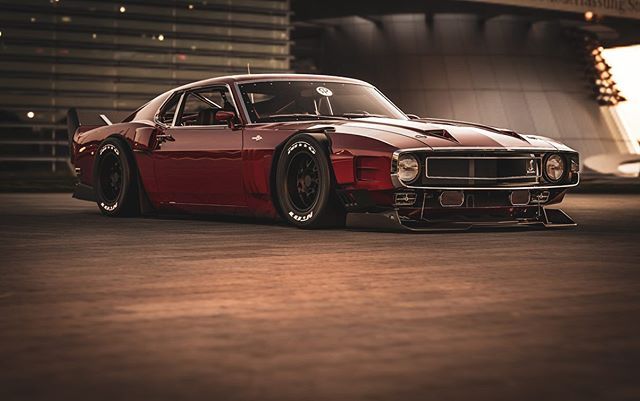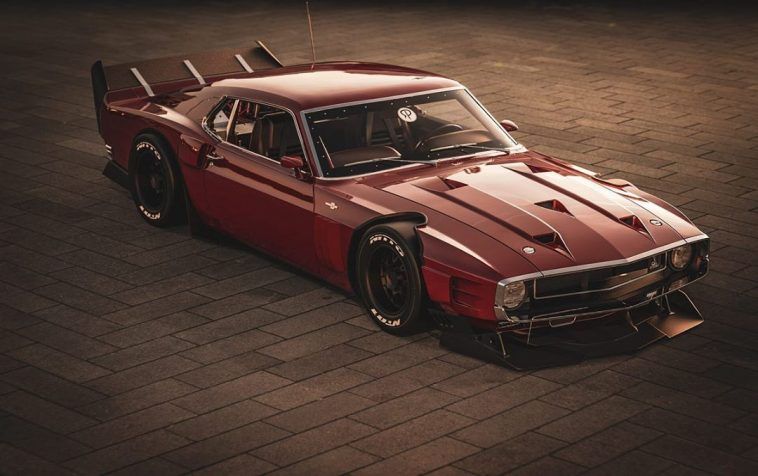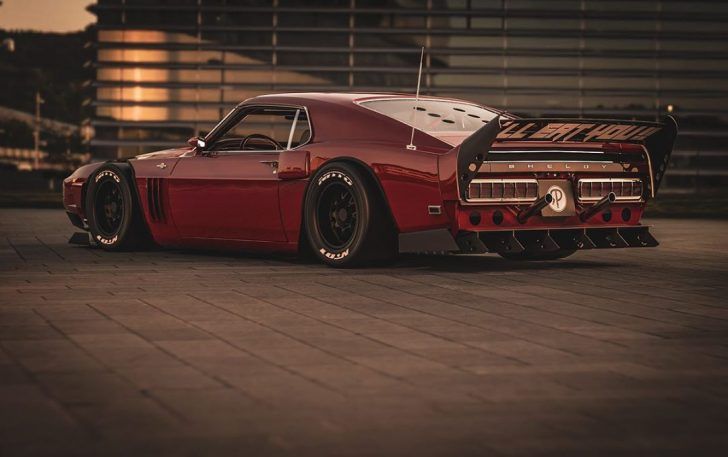The 1969-1970 Ford Mustang Shelby GT500 arguably marked the end of an era, as the GT500 began to be built in-house by Ford. Carroll Shelby's actual involvement in the design of the car was reduced, somewhat telling of the colder relationship between the two sides that was further underlined by the fact that Ford raced the Boss 302 at the same time - not a Shelby model. But all that gets put aside when you look at the renders of Rostislav Prokop that has envisioned an unusual mid-engined Mustang: one that keeps the proportions of the front-engined original.
It's mid-engined but you wouldn't know it
Shelby and Ford partnered to take over the world. Shelby, on the one hand, needed a well-funded partner to get his Cobra project going while the Blue Oval, on the other, was looking for someone to steer their on-track ambitions as the Total Performance era kicked into gear. Throw into the mix the fact that Dearborn's top brass was kicked out by Enzo Ferrari while the Americans tried to coax Il Commendatore to unclutch his hands off the Scuderia, and you've got all the reasons why Ford and Shelby decided to walk together.
As history and cinema tell, the partnership was fruitful with Ford-powered Cobras dominating SCCA competition at first before Pete Brock's Daytona Coupes went on to claim a maiden World Sportscar Championship TItles for an American brand and driver. Then, the Le Mans wins came after Shelby took over the Ford GT40 program and, at the same time, the Ford Mustang was unveiled, and Shelby had a hand in the first go-fast versions ever made, namely the GT350 and, then, the GT500.
While Shelby did still run one of the Works-backed teams in Trans-Am in 1969 (with Messrs Kwech, Gurney, and Revson doing the driving), the 1969 MY Shelby GT350 and GT500 models didn't spawn any race versions and, as a result, have lost some of their appeal over time as fans tend to remember the previous, more race-focused Shelby Mustangs fondly. Having said that, the '69-'70 Mustang Shelbys are quite rare, which makes them a rather expensive proposition at auction.
But all of that couldn't hide the more sedated demeanor of the 1969 GT500. Having grown about four inches in length, the big Shelby also gained weight because Ford decided to retain most of the amenities (like an AM-FM stereo radio, tilt steering, and Ford air conditioning) that were contrasted by the presence of a roll bar.
Shelby GT500 specifications
|
Engine: |
7.0-liter 428 Super Cobra Jet V-8 |
|---|---|
|
Horsepower: |
335 horsepower |
|
Torque: |
440 pound-feet |
|
0-60 mph: |
6.5 seconds |
|
Top speed: |
120 mph |
|
Weight |
3,600 pounds |
Still, Carroll Shelby owned a 1969 Shelby GT500, but his was the even heavier convertible which, at 3,960 pounds, couldn't dream of reaching the manufacturer-proclaimed six-second 0-60 mph time. But that didn't stop someone from paying almost $130,000 for it during the Bonhams Quail Lodge auction in 2018.
Looking at the grand proportions of the last of the original Shelby Mustangs (Ford and Shelby effectively stopped working together in August of 1969), digital artist Rostislav Prokop came up with this. Low slung, full of aero bits and pieces and finished in a gorgeous dark red tint; this GT500 serves us a special treat: its engine is in the middle.
However, what Prokop's done is quite ingenious as he tried as much as possible to conceal the relocation of the engine, much like Porsche has done in the case of its most recent GTE-spec race cars that, while mid-engined, have kept that unmistakable Porsche shape. As such, there's still a low, long hood in the front; it fenders cut to make room for huge black wheels hugged by Nitto tires. To keep the illusion going, the hood even has three big, bulging vents, but it's the cut-through rear window that gives this monster away. There's probably little to no separation between the driver/passenger and the engine bay but what's certain is that there's no back seat.
There is, however, a huge, land-speed-record-style wing in the back as well as a diffuser that channels the air direct by that big, multi-element splitter in the front. It's all really intricate, and the only issue is that the car doesn't exist. If it did, then probably it'd need more holes for cooling in the back and into the B-pillars and rear fenders, but we guess some more cutting wouldn't ruin this 'Stang's appeal.




